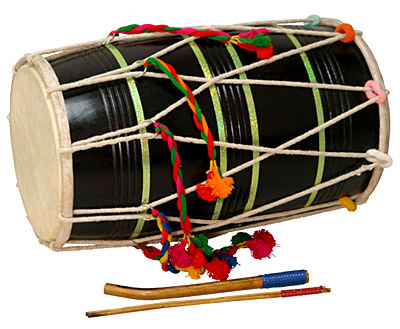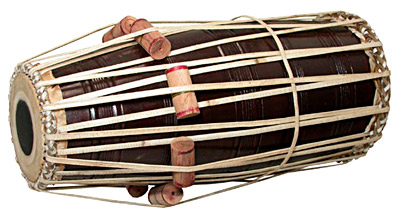 A barrel drum is so called because it is shaped like a barrel. It is a percussion instrument belonging to the drum family, an important variation of the tubular drum. The group of instruments belonging to the barrel family is wider in the middle than on the top or bottom. They are of equal size in both ends. They often have a membrane covered head on the top only and remain open at the bottom.
A barrel drum is so called because it is shaped like a barrel. It is a percussion instrument belonging to the drum family, an important variation of the tubular drum. The group of instruments belonging to the barrel family is wider in the middle than on the top or bottom. They are of equal size in both ends. They often have a membrane covered head on the top only and remain open at the bottom.
The barrel shaped drums are most popular in the Asian countries, namely India, Thailand, Indonesia and Korea. Though they are mostly found with a single drumhead, there are also certain versions of this drum which have two drumheads. Familiar representatives are the mridangam from southern India, which is played horizontally with one hand, and the dhol. In the case of the latter, pitch variations are produced by moving rings over the tension laces of the drumhead. Wide varieties of barrel drums are used in Indian music. These include the dhol, the dhak, dholak, khol, pakhawaj and mridangam.
The dhol is a popularly used instrument in India, especially the Punjab region. It is a double-sided barrel drum which is mostly played as an accompaniment to the traditional Punjabi dance of Bhangra and the Gujarati Raas. The drum consists of a wooden barrel with animal hide stretched over its open ends, covering them completely. These skins can be stretched or loosened with a tightening mechanism made up of either interwoven ropes, or nuts and bolts. Tightening or loosening the skins subtly alters the pitch of the drum sound. The stretched skin on one of the ends is thicker and produces a deep, low frequency (higher bass) sound and the other thinner one produces a higher frequency sound. The dhol is played using two wooden sticks, usually made out of bamboo and cane wood.
The Dholak is a North Indian hand drum which is cylindrical in shape and made out of solid wood. It has a simple membrane and a handle on the right-hand side. The left-hand membrane has a special coating on the inner surface which lowers the pitch and provides a well-defined tone. The dholak is used for a number of purposes in Indian music- Qawwali, folk music of North India, Bhangra, Garba, Bhajans and kirtans.
 The Pakhavaj is an ancient Indian barrel-shaped instrument famous in North India. It is a long bodied wooden drum with both ends covered in skin. Played horizontally with the fingers and palms of both hands, the right hand surface is tuned to the pitch required and the left hand surface provides the base. The goatskin membranes are looped with leather thongs around the hollowed barrel, which is widest in the middle, as is typical of barrel drums. The treble skin is fitted with three concentric rings of dense black hardened paste which helps create a sound resonant with harmonics. Care has to be taken that the sound emitted by a particular stroke should merge completely with that of the accompanying tanpura.
The Pakhavaj is an ancient Indian barrel-shaped instrument famous in North India. It is a long bodied wooden drum with both ends covered in skin. Played horizontally with the fingers and palms of both hands, the right hand surface is tuned to the pitch required and the left hand surface provides the base. The goatskin membranes are looped with leather thongs around the hollowed barrel, which is widest in the middle, as is typical of barrel drums. The treble skin is fitted with three concentric rings of dense black hardened paste which helps create a sound resonant with harmonics. Care has to be taken that the sound emitted by a particular stroke should merge completely with that of the accompanying tanpura.
The mridangam exhibits the most prominent form of the barrel drum. It is a double-sided drum whose body is usually made using a hollowed piece of jackfruit wood about an inch thick. The two mouths or apertures of the drum are covered with goat skin leather and laced to each other with leather straps around the circumference of drum. These straps are put into a state of high tension to stretch out the circular membranes on either side of the hull, allowing them to resonate when struck. These two membranes are dissimilar in width to allow for the production of both bass and treble sounds from the same drum. The smaller membrane, when struck, produces higher pitched sounds with a metallic timbre. The wider aperture produces lower pitched sounds. It is the primary rhythmic accompaniment in Carnatic music.




















